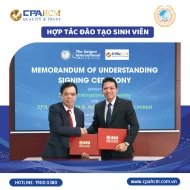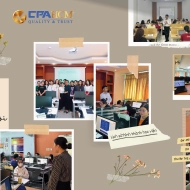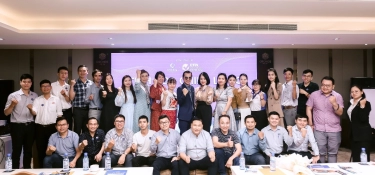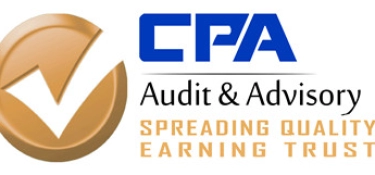Develop policies and recruitment tools
Compared with the previous one, this Circular adds two objects of taxable contractor: On-site Import.
1. Why develop recruitment policies and tools??
People are always the leading factor in creating business success. In the integration trend, development opportunities for talented people are increasing, so they have more choices for their careers. That is one of the reasons why businesses always face both a lack of talent and an inability to maintain a talented staff. Furthermore, ineffective selection also causes businesses difficulties and pressure on work progress as well as costs in terms of time and resources spent on recruitment. From there, there is an urgent need for businesses to develop appropriate recruitment policies and solutions, attract talent, and compensate for human resource shortages to maintain the position of the business.
2. When to develop recruitment policies and tools?
Developing recruitment policies and tools is especially important in human resource management. When a business has changes in human resources, having a complete system of recruitment policies and tools will help businesses effectively manage human resources and save a lot of costs and time. Policies used in the process of attracting and retaining human resources. Along with policies are recruitment tools that help evaluate and select personnel more accurately, in accordance with job requirements and corporate culture.
3. Basic steps to develop recruitment policies and tools:
· Unify goals and direction of human resource management.
· Build MTCV and work standards.
· Develop human resource plans and recruitment schedules.
· Build recruitment tools.
· Develop implementation plans and recruitment support activities.
· Unify the roles and development orientation of the human resources department.
· Develop a human resources department development plan.
· Regular support with professional tools and working methods.
4. Methods of implementation:
The development of recruitment policies and tools must be based on practical and objective analysis and assessment. At the same time, to develop appropriate policies and effective recruitment tools, businesses must have close coordination between businesses and consultants.
Consulting experts, as an objective third party, will collect survey data, analyze, and propose policies. At the same time, consulting will act as a nucleus to stimulate change from within, helping the human resources department have effective recruitment policies and tools in human resource management.
Regarding coordination methods: the two sides will comply with the principles: Direct communication, unified goals; Build an action plan together; Active implementation and timely feedback; Continuous interaction, periodic reporting. Consulting has a supporting role, not replacing it. The capacity of the human resources department only increases when there are effective support tools.
5. Scope and cost:
The scope of implementing recruitment policies and tools will be agreed upon by both parties based on the actual situation of the human resources team, the scale of the organization and the goals of the business leadership.
Project implementation time can last from 1 month to 2 months, depending on the current situation and goals of the business.
Cost: based on the number of working hours of the expert according to the scope of work and project requirements agreed upon by both parties.
Tin cùng chuyên mục
CPA HCM Training Academy continues to welcome more than 500 students from Ho Chi Minh City College of Economics.
CPA HCM ACCOMPANIES WITH THE HCMC ASSOCIATION FOR NATURE AND ENVIRONMENT PROTECTION
CPA HCM THANK YOU BUSINESSES FOR PARTICIPATING IN THE EVENT OF THE COURSE "STRATEGIC ESSENCE" - October 12, 2023
COURSE "STRATEGIC ESSENCE" HELPING BUSINESSES IN STRATEGIC MANAGEMENT, BUILDING ORGANIZATIONAL DEVELOPMENT ORIENTATION AND GOALS OCTOBER 12, 2023
Develop policies and recruitment tools
CPA HCM 10 YEARS JOURNEY OF DREAMS
CPA HCM accompanies accounting students
FOR THE FUTURE OF ASIAN ACCOUNTING - CPA STUDENTS AND THE UNIVERSITY OF FINANCE - MARKETING OFFICIALLY SIGNED A COOPERATION AGREEMENT
The 10 years of establishing the company are also the 10 years of establishing friendly football teams.

















